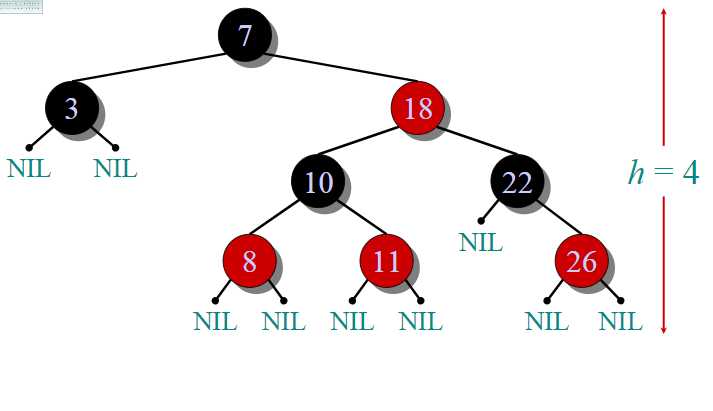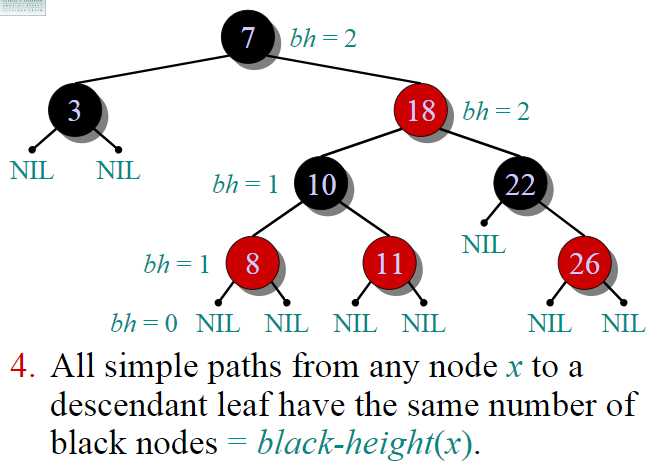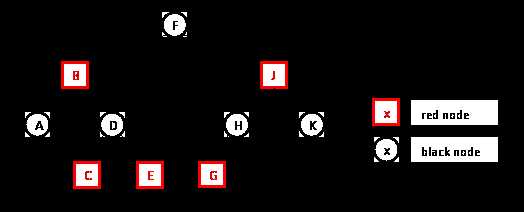标签:ast tree diff end including ber nbsp root and
https://ocw.mit.edu/courses/electrical-engineering-and-computer-science/6-046j-introduction-to-algorithms-sma-5503-fall-2005/video-lectures/lecture-10-red-black-trees-rotations-insertions-deletions/lec10.pdf

This data structure requires an extra one-bit color field in each node.
Red-black properties:
1. Every node is either red or black.
2. The root and leaves (NIL’s) are black.
3. If a node is red, then its parent is black.
4. All simple paths from any node x to a descendant leaf have the same number of black nodes = black-height(x).

http://pages.cs.wisc.edu/~skrentny/cs367-common/readings/Red-Black-Trees/index.html
Recall that, for binary search trees, although the average-case times for the lookup, insert, and delete methods are all O(log N), where N is the number of nodes in the tree, the worst-case time is O(N). We can guarantee O(log N) time for all three methods by using a balanced tree -- a tree that always has height O(log N)-- instead of a binary search tree.
A number of different balanced trees have been defined, including AVL trees, 2-4 trees, and B trees. You might learn about the first two in an algorithms class and the third in a database class. Here we will look at yet another kind of balanced tree called a red-black tree.
The important idea behind all of these trees is that the insert and delete operations may restructure the tree to keep it balanced. So lookup, insert, and delete will always be logarithmic in the number of nodes but insert and delete may be more complicated than for binary search trees.
A red-black tree is a binary search tree in which
An example of a red-black tree is shown below:

标签:ast tree diff end including ber nbsp root and
原文地址:http://www.cnblogs.com/yuanjiangw/p/7780299.html